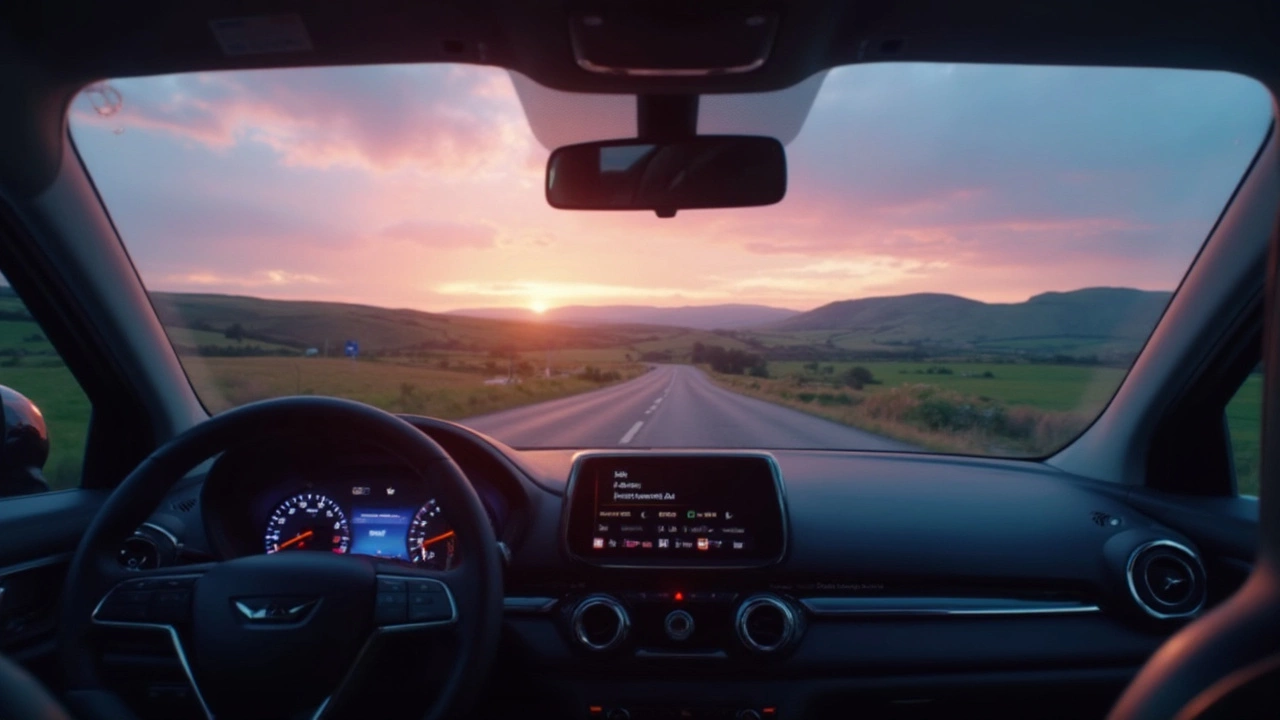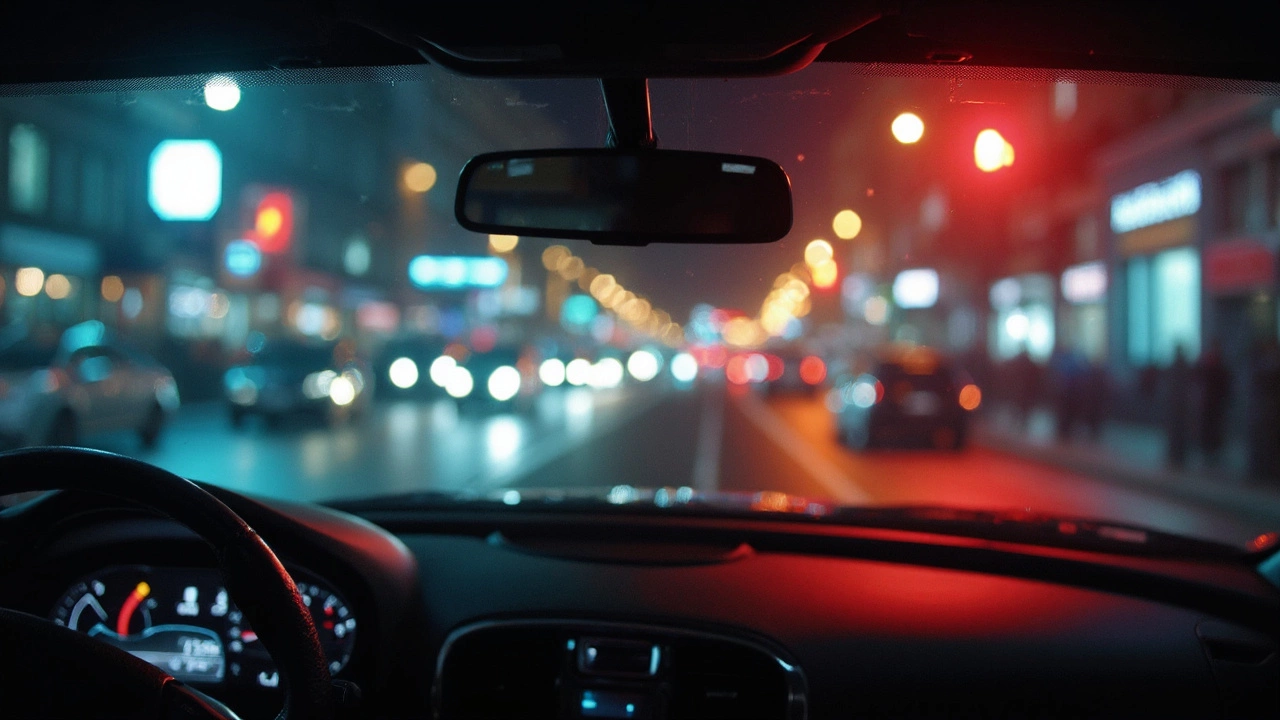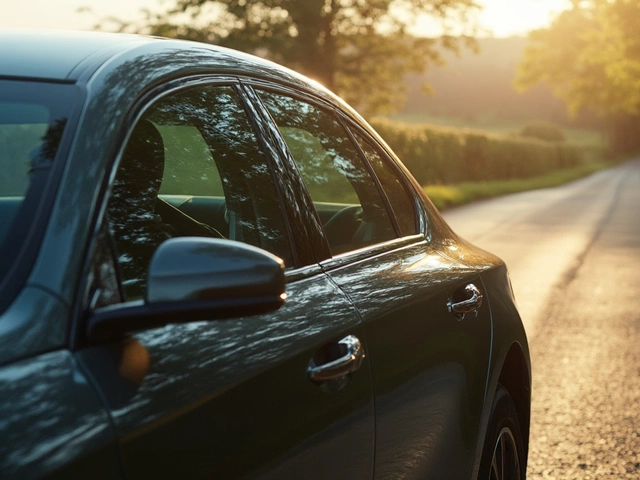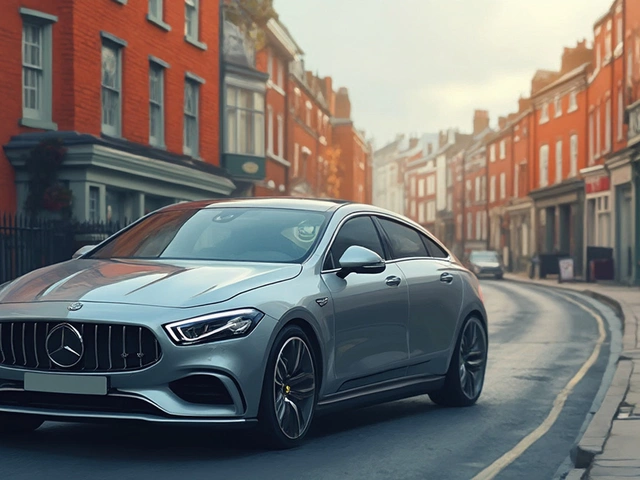So, what’s the deal with 30% tint? It’s one of those things people talk about, but unless you’re a car enthusiast or a tinting pro, it might sound a bit abstract. Picture this: you’re behind the wheel on a sunny day, the glare is intense, and you’re squinting to see the road. Now, imagine a 30% tint on your windows—it's like slipping on a pair of shades for your car. It blocks out a good chunk of the sunlight, making your drive more comfortable without turning your ride into a dark cave. Sounds neat, right?
Many folks wonder how dark 30% tint really is. In simple terms, it means your windows will let in 30% of the visible light. Not too dark, not too light—kind of the Goldilocks of window tints. It strikes a balance, offering you some privacy while still allowing you to see out with no problem. Whether you're parked in a busy area or just want a little more shade inside your car, it’s a popular pick among drivers.
But before you rush to your local auto shop, there’s more to consider—like the legal side of things. Every state has its own rules about how dark your tint can be. And trust me, getting pulled over for illegal window tint isn't anyone's idea of fun. So, if you’re thinking about tinting your windows, or just curious, stick around. We’ll go through everything that you need to know about that 30% magic.
- What is 30% Tint?
- Visibility and Privacy
- Legal Considerations
- Benefits of 30% Tint
- Choosing the Right Tint for You
What is 30% Tint?
When we’re talking about 30% tint, it's all about how much visible light your window lets in. With 30% tint, your windows will allow 30% of the light to pass through, meaning it's blocking out the other 70%. This percentage is known as the Visible Light Transmission (VLT) and it's a pretty straightforward concept once you get it. So, if you want your car windows to be darker, you’d go for a tint with a lower VLT percentage.
Why choose 30%? Well, it’s kind of like finding the sweet spot. A 30% tint offers a decent level of privacy so you won’t feel like you’re in a fishbowl, yet it’s not so dark that it makes night driving tricky. Plenty of people find this tint level comfortable because it cuts down on glare and keeps your car cooler without making it too gloomy inside.
You might be surprised to learn that different types of film can be used to achieve that 30% darkness. Some are dyed, which gives a darker appearance without a huge price tag. Others might be metalized or even ceramic, offering extra benefits like better heat reduction or more scratch resistance.
If you’re still wondering how this translates to real life, just think of it as similar to wearing light sunglasses—not super dark, but enough to ease the harshness of bright sunlight.
| Tint Type | Visible Light Transmission (VLT) |
|---|---|
| 30% Tint | 30% light enters |
| 20% Tint | 20% light enters |
| 50% Tint | 50% light enters |
Visibility and Privacy
Let’s break down the whole visibility and privacy deal when it comes to 30% tint. It's like you get to be a bit of a ninja, seeing out but not having everyone peeking in. So, how does it actually look from inside your car? With a 30% tint, you’ve got a pretty decent field of vision. You’re not going to feel like you’re squinting in a dark closet. It offers enough shade to ease the strain on your eyes, especially when the sun is blasting.
From the outside, 30% tint does a nifty job of cutting down on prying eyes. It's not limo-dark, so folks will see some shapes and colors inside, but it’s enough to keep most people guessing. A good way to think about it is like wearing sunglasses. People can still remember it's you, but they can’t quite make out every little detail.
And yes, your eyes aren't playing tricks on you when you notice less glare. That's one of the best perks of this window tint, especially for those with long commutes or for folks living where the sun is known to be unforgiving. Plus, it adds a layer of protection, keeping the UV rays at bay, and that’s a win for your skin and car’s interior.
Here's a neat tidbit: In a study about window tints and privacy, 30% tint was often preferred by drivers who wanted a mix of style and function without compromising on their ability to drive safely at nighttime. It helps maintain a level of comfort while reducing distractions—and there's nothing quite like taking that late-night drive without the worry of blinding headlights.
So why is 30% tint such a crowd favorite? It's the perfect mix of style and practicality. It's cool without being over the top, practical without sacrificing your view on the road. Not to mention, it just lends your car that sleek, finished look many of us love.

Legal Considerations
Before you slap on that slick window tint, it's super important to know what the law says. Each state in the U.S. has its own tint laws, which can vary quite a bit. While a 30% tint is a common choice, you need to make sure it’s legal in your area. Some states are more lenient, letting you go as dark as you want on the back windows, while others have restrictions all around.
For instance, in California, the law states that the front side windows must allow more than 70% of light in, meaning 30% tint won’t cut it for the front. Meanwhile, down in Texas, you can sport that 30% tint on the front side windows just fine as long as the back windows meet certain visibility standards.
Check out your state’s Vehicle Code or consult a local professional to stay on the right side of the law. The fines can get steep if you don’t comply, and nobody wants to deal with a ticket.
Let's say you're in Florida. Legal tint is measured by Visible Light Transmission (VLT percent), where the higher the number, the more light can pass through. For sedans, Florida allows a maximum VLT of 28% on front side windows. But for the rear windows, you can go dark with a VLT of 15%. Each state has its unique twist, so it's always good to double-check.
If you’re planning a cross-country road trip or relocating, remember that what’s legal in one state might not fly in another. It’s a small detail, but crucial to avoid any surprises on the road.
Besides state laws, consider federal regulations if you drive for commercial purposes. All these rules boil down to ensuring driver safety—clear visibility is crucial, and too dark a tint can be a hazard. So, do your homework on legal requirements before tinting your windows.
Benefits of 30% Tint
Alright, so let's get into why you might want to go for a 30% tint on your car windows. First up, let’s talk about comfort. Especially during those blazing hot summer days, this tint level cuts down the heat inside your car, making it a lot cooler. Who wouldn't want that? The tint actually blocks out a significant portion of the sun’s heat-producing infrared rays, saving your car’s interior from turning into a sauna.
Now, onto privacy. With 30% tint, you've got a bit of a privacy shield. People on the outside can’t easily see in, so you can stash your stuff in the back seat without worrying too much. But don’t worry, it doesn’t feel like you’re living in a cave—you can still see out pretty clearly, which is great for driving, especially at night.
Let's not forget about the famous fading effect. Your car’s interior, be it your fancy leather seats or a classic dashboard, won’t thank you for exposing them to harsh sunlight over time. A 30% tint helps protect these surfaces from fading and cracking, extending their lifespan and keeping your ride looking sharp.
Another cool benefit? It reduces glare. This is super handy for safer driving. You’ll find it easier to see where you’re going when the sun decides to be that annoying co-pilot and blind you with its rays. Less squinting and stress equals a happier and safer drive.
If you're the environmentally conscious type, here's a bonus perk: by keeping your car cooler, you won’t need to crank the AC as much. That little bit of energy savings can sometimes give your car’s fuel efficiency a tiny bump. It's not a huge change, but hey, every little bit helps.
All things considered, a 30% tint is like a Swiss army knife of car window modifications—it does a bit of everything! So, if these perks sound good to you, it might just be the perfect choice for your car.

Choosing the Right Tint for You
So, you’re thinking about getting a window tint but aren't sure if 30% tint is your perfect match? No sweat, you're not alone! Choosing the right tint can feel a bit like picking the wrong end of a stick. Let's break it down with a few questions to guide you.
First off, ask yourself why you want a tint. Are you craving more privacy, or is the goal to cut glare and make your drive more comfy? If privacy tops your list, then a darker tint could be the way to go. But if comfort without feeling like you're driving at midnight is your aim, 30% tint strikes a great balance—it's the sweet spot for many drivers.
Consider your usual driving conditions. If you’re often on sun-baked roads, a tint that blocks more heat and UV rays might be crucial. Still, keep an eye on those legal considerations. Even if you think extra dark looks cool, your state might disagree. Nothing like a surprise ticket to ruin your day!
| State | Legal Tint Limit |
|---|---|
| California | 70% |
| Texas | 25% |
| Florida | 28% |
If you're in a state like Texas, you’re free to go as low as 25% on the front windows. Meanwhile, California is more conservative. Check your local laws so you're not caught off guard.
Here's a pro tip: visit a local tint shop and check out different tint levels in person. It’s like trying on a pair of jeans—you get a better feel when you see it live. Plus, the pros can offer advice tailored to your needs and help you choose the best film type, whether ceramic or dyed, for your vehicle.
- For daily drivers who shuttle kids and groceries—aim for comfort and UV protection.
- If you’re a nightlife person, a tint for privacy that still offers good night visibility might be key.
- Car eye-candy enthusiasts? Darker tints give that sleek, mysterious vibe but remember to play by the rules.
In the end, it’s not just about the specs; it’s about how you feel behind those tinted windows. Make a choice that suits both your lifestyle and your local law book, and enjoy the drive!




